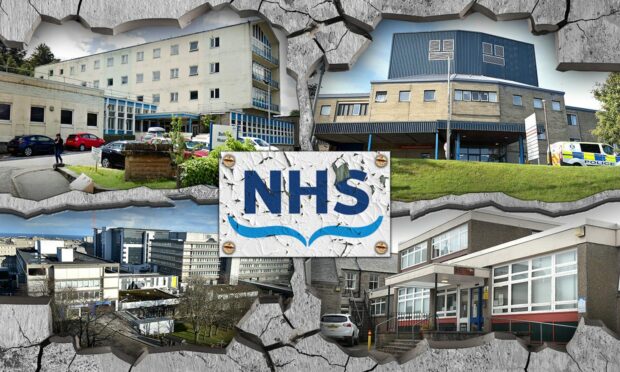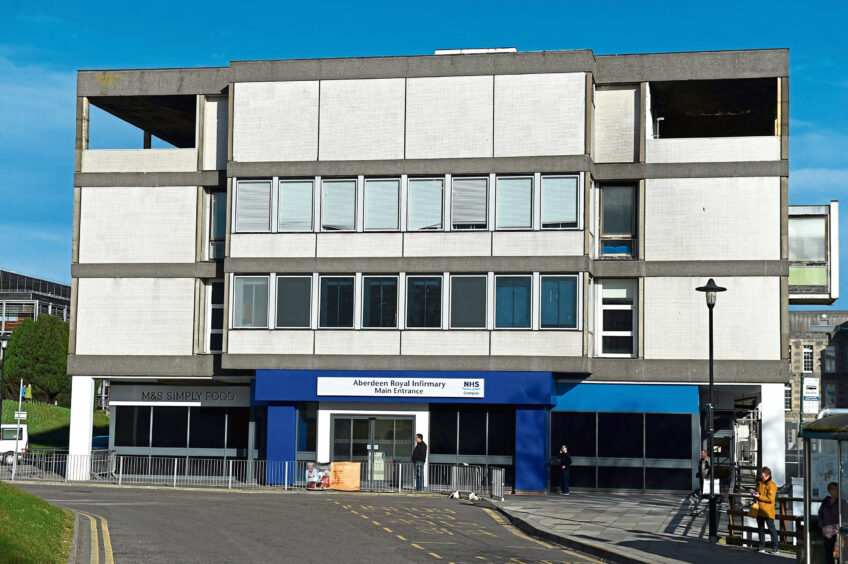From dentists to health centres and hospital maternity units, we can today reveal the NHS buildings near you that are at risk of crumbling due to Raac.
Reinforced autoclaved aerated concrete (RAAC) was used between the 1950s and the 1990s as a cheaper and lighter alternative to concrete.
However, the material has now been found to have flaws regarding durability and could crumble, especially when wet.
NHS Scotland has warned the material is potentially vulnerable to “catastrophic failure without warning”.
A total of 254 NHS buildings across the country may be at risk as a result of the faulty concrete – of which 53 are in Grampian and 25 in the Highlands.
These include clinics, health centres, hospitals and teaching schools.
It also included important healthcare facilities such as Aberdeen Royal Infirmary (ARI).
NHS Grampian
NHS Grampian‘s flagship hospital, Aberdeen Royal Infirmary, has 14 areas of concern, including the cardiac department, mortuary, outpatients and radiotherapy – as well as corridors and linkspans.
The health board stressed not all areas are patient-facing and those coming to healthcare facilities should go about their normal business.
Aberdeen Dental School – which opened in 2010 in response to a chronic dentist shortage – is also on the list, along with the ante-natal unit at the maternity hospital and two buildings at Woodend Hospital.
The mortuary and the physio units at Dr Gray’s Hospital in Elgin are also on the list, along with the 30-bed geriatric unit at Ugie Hospital in Peterhead.
The Jubilee Hospital in Huntly and Fraserburgh Hospital both have areas of concern.
Health centres in Grampian include Denburn, Dyce, and Kincorth, in Aberdeen, Ellon, Huntly, Peterhead, Aberlour, Elgin, Keith, and Cullen.
An NHS Grampian spokeswoman said: “Using the age of a building and the type of construction as a guide, we have compiled a list of 53 buildings – or parts of buildings – in Grampian which will require further investigation as they may – and we stress may – contain RAAC.
“We are communicating directly with the staff in those buildings to ensure they have all the information currently available and we will continue with regular updates. We require the results of the discovery surveys before we can make further plans.
“Both staff and patients should continue to work and attend appointments as usual.”
NHS Highland
Raigmore Hospital in Inverness had one area highlighted, Zone 5.
Three blocks at Caithness General Hospital are on the list, along with the new out-patients block at Dunbar Hospital in Thurso.
Community hospital Ian Charles Hospital, in Grantown-on-Spey, has also been identified, along with Portree Hospital’s main building and three other areas.
In Fort William, the renal unit as well as offices, staff canteen and accommodation at the Belford Hospital is on the list. Care home Invernevis House is also at risk.
An NHS Highland spokesman said: “NHS Assure has been coordinating a piece of work to establish which buildings within NHS Scotland could potentially have RAAC.
“During the process, it identified some areas within our estate that could potentially have RAAC, and we are now setting up onsite surveys to confirm that RAAC is present and establish what if any risk/cost associated.”

